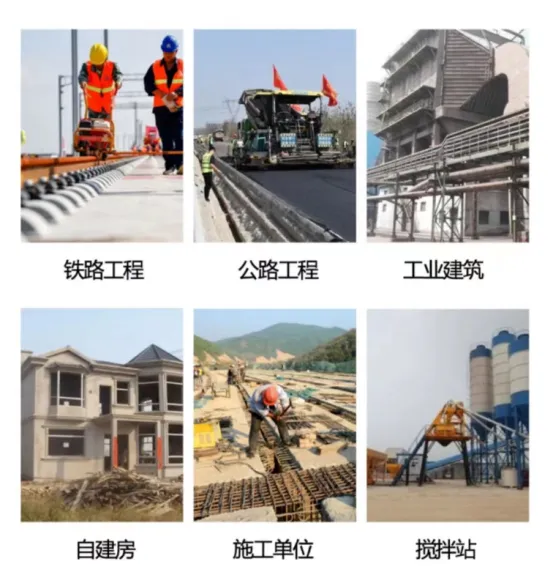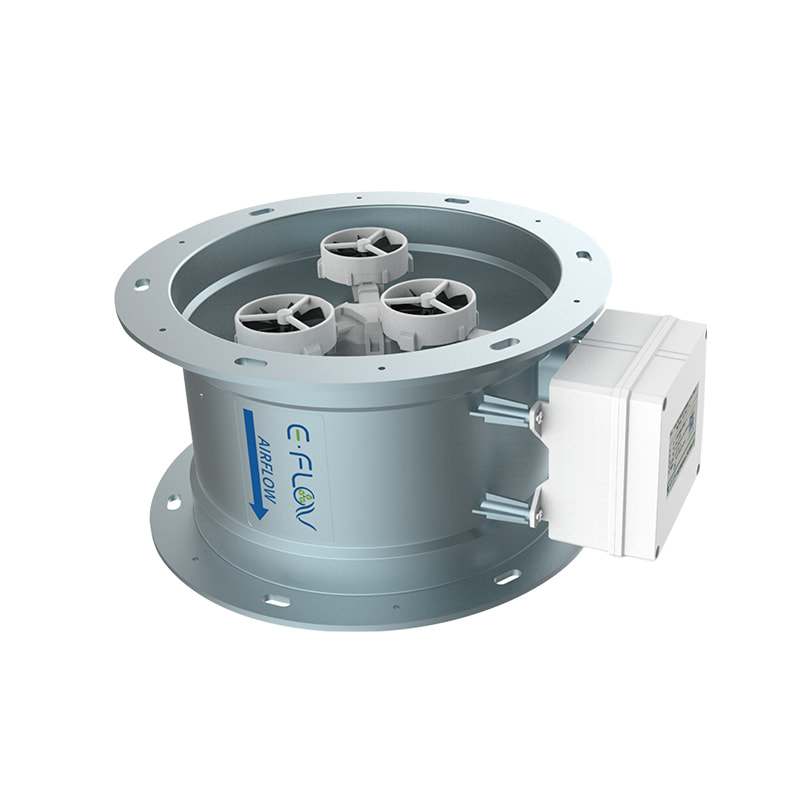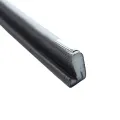10 items of scaffolding acceptance
Scaffolding is an indispensable and important facility in construction. It is a working platform and working channel built to ensure the safety of high-altitude operations and smooth construction. In recent years, scaffolding accidents have occurred frequently across the country. The reasons are basically: the construction plan (operation instructions) is perfunctory, the construction personnel violate the regulations, and the inspection, acceptance and listing are not implemented in place. At present, there are still many scaffolding problems at construction sites in various places, and safety hazards are imminent. Management personnel must pay enough attention to the safety management of scaffolding. "Strict acceptance" is particularly important.
When should scaffolding acceptance be done?
Scaffolding should be accepted at the following stages:
1) After the foundation is completed and before the frame is erected.
2) After the first large crossbar of large and medium-sized scaffolding is erected.
3) After each 6-8m height is erected.
4) Before the load is applied to the working surface.
5) After reaching the design height (each layer of scaffolding for structural construction is inspected once).
6) After a wind of level 6 or above or heavy rain, or after the frozen area thaws.
7) After being out of use for more than one month.
8) Before demolition.
10 items of scaffolding acceptance
Foundation and foundation
➤ Acceptance content
1) Whether the construction of the scaffolding foundation and foundation has been calculated according to the relevant regulations based on the scaffolding erection height and the soil conditions of the erection site.
2) Whether the scaffolding foundation and foundation are compacted.
3) Whether the scaffolding foundation and foundation are flat.
4) Whether there is water accumulation in the scaffolding foundation and foundation.
Drainage ditch
➤ Acceptance content
1) Remove and level the debris at the scaffolding erection site, and make the drainage unobstructed.
2) The distance between the drainage ditch and the outermost row of scaffolding poles should be greater than 500mm.
3) The width of the drainage ditch is between 200mm and 350mm, and the depth is between 150mm and 300mm.
4) A water collection well (600mm×600mm×1200mm) should be set at the end of the ditch to ensure that the water in the ditch is discharged in time.
Pad and bottom bracket
➤ Acceptance content
1) The acceptance of the scaffolding pad and bottom bracket is determined according to the height and load of the scaffolding.
2) The pad specifications of the scaffolding below 24m are (width greater than 200mm, thickness greater than 50mm, length should not be less than 2 spans), ensure that each vertical pole must be placed in the middle of the pad, and the pad area must not be less than 0.15㎡.
3) The thickness of the bottom pad of the load-bearing scaffolding above 24m must be strictly calculated.
4) The scaffolding bottom bracket must be placed in the center of the pad.
5) The width of the scaffolding bottom bracket shall not be less than 100mm and the thickness shall not be less than 5mm.
Sweeping rod
➤ Acceptance content
1) The sweeping rod must be connected to the vertical pole, and the sweeping rod must not be connected to the sweeping rod.
2) The horizontal height difference of the sweeping rod shall not be greater than 1m, and the distance from the slope shall not be less than 0.5m.
3) The longitudinal sweeping rod shall be fixed to the vertical rod at a distance of no more than 200mm from the base epidermis with a right-angle fastener.
4) The horizontal sweeping rod should be fixed to the vertical rod close to the longitudinal sweeping rod with a right-angle fastener.
Main body
➤ Acceptance content
1) The acceptance of the scaffolding main body is calculated according to the construction needs. For example, the vertical pole spacing of the ordinary scaffolding must be less than 2m, the longitudinal horizontal pole spacing must be less than 1.8m, and the vertical horizontal pole spacing must be less than 2m. The scaffolding carried by the building must be accepted according to the calculation requirements.
2) The vertical deviation of the vertical pole shall be implemented according to the data in Table 8.2.4 of the Technical Specifications for Fastener-Type Steel Pipe Scaffolding for Building Construction JGJ130-2011.
Suggested reading:How Epoxy Coated Steel Strand Improves Infrastructure Durability?
Key Considerations for Purchasing Prestressing Steel Strand
Aluminum Coil for Concert Halls: Innovations in 2024
Key Applications of Low Maintenance Aluminum Coil
How Can Color Coated Aluminum Coils Enhance Your Project's Aesthetic Appeal?
How Does Wooden Color Aluminum Coil Transform Spaces?
Top Cermet Bits for Sale: Unleash Your Machining Power
3) When the scaffolding poles are extended, except for the top of the top floor, the joints of the other layers and steps must be connected with butt fasteners. The joints of the scaffolding frame should be staggered: the joints of two adjacent poles should not be set in the same synchronization or span; the horizontal distance between two adjacent joints of different synchronization or different spans should not be less than 500mm; the distance from the center of each joint to the nearest main node should not be greater than 1/3 of the longitudinal distance; the lap length should not be less than 1m, and 3 rotating fasteners should be set at equal intervals. The distance from the edge of the end fastener cover to the end of the lapped longitudinal horizontal pole should not be less than 100mm. In the double-pole scaffolding, the height of the auxiliary pole shall not be less than 3 steps, and the length of the steel pipe shall not be less than 6m.
4) The small crossbar of the scaffolding should be set at the intersection of the vertical pole and the large crossbar, and must be connected to the vertical pole with a right-angle fastener. When at the operating level, a small crossbar should be added between the two nodes to bear and transfer the load on the scaffolding board. The small crossbar must be fixed with a right-angle fastener and fixed to the longitudinal horizontal bar.
5) The fasteners must be used reasonably during the erection of the frame, and they must not be substituted or misused. Fasteners with cracks must never be used in the frame.

Scaffolding board
➤ Acceptance content
1) After the scaffolding is erected at the construction site, the scaffolding board must be fully laid and the scaffolding board must be correctly connected. At the corners of the frame, the scaffolding boards should be staggered and must be tied tightly. Uneven places should be leveled and nailed with wooden blocks.
2) The scaffolding boards on the working layer should be laid flat, fully packed, and firmly tied. The length of the end scaffolding board probe 120-150mm away from the wall should not be greater than 200mm. The spacing of the horizontal bars should be set according to the use of the scaffolding. The scaffolding boards can be laid flat or overlapped.
3) When using scaffolding boards, both ends of the horizontal bars of the double-row scaffolding should be fixed to the longitudinal horizontal bars with right-angle fasteners.
4) One end of the horizontal bar of the single-row scaffolding should be fixed to the vertical bar with a right-angle fastener, and the other end should be inserted into the wall. The insertion length should not be less than 18cm.
5) The scaffolding boards on the working layer should be fully and firmly laid, 12cm to 15cm away from the wall.
6) When the length of the scaffolding board is less than 2m, two horizontal bars can be used for support, but the two ends of the scaffolding board should be aligned and reliably fixed to prevent tipping. These three types of scaffolding boards can be laid flat or overlapped. When the scaffolding boards are laid flat, two horizontal bars must be set at the joints. The outward extension of the scaffolding boards should be 130-150mm, and the sum of the outward extension lengths of the two scaffolding boards should not exceed 300mm; when the scaffolding boards are laid in overlap, the joints must be supported on the horizontal bars, the overlap length should be greater than 200mm, and the length extending from the horizontal bars should not be less than 100mm.
Wall ties
➤ Acceptance content
1) There are two types of wall ties: rigid wall ties and flexible wall ties. Rigid wall ties should be used on the construction site. For scaffolding with a height of less than 24m, wall ties should be set up in 3 steps and 3 spans, and for scaffolding with a height between 24m and 50m, wall ties should be set up in 2 steps and 3 spans.
2) Wall ties should be set up from the first step of the longitudinal horizontal bar at the bottom layer of the scaffolding body.
3) Wall ties should be set close to the main node, and the distance from the main node should not be greater than 300mm.
4) Wall ties should preferably be arranged in a diamond shape, but can also be arranged in a square or pitch shape.
5) Wall ties must be set at both ends of the scaffolding. The vertical spacing of the wall ties should not be greater than the floor height of the building, and should not be greater than 4m (two steps).
6) Single and double row scaffolding with a scaffolding frame height of less than 24m should be reliably connected to the building with rigid wall ties, or wall-attached connections using scaffolding tubes, tie bars and top braces, and anti-slip measures should be set at both ends. It is strictly forbidden to use flexible wall ties with only tie bars.
7) Single and double row scaffolding with a scaffolding frame height of more than 24m must be reliably connected to the building with rigid wall ties.
8) The wall tie rods or tie bars in the wall tie should be set horizontally. When it cannot be set horizontally, the end connected to the scaffolding should be tilted downward for reliable connection.
9) Wall ties must be structures that can withstand tension and pressure.
10) When the lower part of the scaffolding cannot be temporarily equipped with wall ties, a guy can be set up. The guy should be reliably connected to the scaffolding with a full-length rod, and the inclination angle with the ground should be between 45 and 60 degrees; the distance from the center of the connection point to the main node should not be greater than 300mm. The guy should be removed separately after the wall connection is erected.
11) When the scaffolding frame height is above 40m and there is a wind vortex effect, wall connection measures to resist the rising and turning flow should be taken.
Scissor brace
➤ Acceptance content
1) Double-row scaffolding with a height of 24m and above should be continuously set with scissor braces on the entire outer facade; double-row scaffolding with a height of less than 24m; both sides of the outer side, corners and the middle facade with an interval of no more than 15m must be designed with a scissor brace, and they should be set continuously from bottom to top.
2) The diagonal rod of the scissor brace should be fixed to the protruding end or vertical rod of the horizontal horizontal rod intersecting with it with a rotating fastener, and the distance from the center line of the rotating fastener to the main node should not be greater than 150mm.
3) Both ends of the open double-row scaffolding must be equipped with horizontal diagonal braces.
Up and down measures
➤ Acceptance content
1) There are two types of scaffolding up and down measures: hanging ladders and setting up "Z"-shaped walkways or inclined walkways.
2) The ladder must be hung vertically from low to high, and must be fixed once every 3m vertically. The top hook must be tied firmly with 8# lead wire.
3) The up and down walkways must be set up at the same height as the scaffolding. The width of the pedestrian walkway shall not be less than 1m, the slope shall be 1:3, and the width of the material transport walkway shall not be less than 1.5m, and the slope shall be 1:6. The spacing of the anti-slip strips is 200~300mm, and the height of the anti-slip strips is about 20-30mm.
Anti-fall measures for the frame
➤ Acceptance content
1) If the construction scaffolding needs to be hung with a safety net, check that the safety net must be flat, firm and complete.
2) A dense mesh must be set on the outside of the construction scaffolding, and the dense mesh must be flat and complete.
3) Anti-fall measures must be set every 10m of the vertical height of the scaffolding, and a dense mesh must be set on the outside of the frame in time. The inner safety net must be pulled tight when laid, and the safety net fixing rope must be tied around a fixed and reliable place.
Are Your Aluminum Coil Shutters Vulnerable to Weather Damage?
Unlocking Benefits of Personalized Aluminum Coil for Your Projects
Exploring Innovations in Yuanxian High-Tech Materials
“Exploring the Benefits of Colored Coated Aluminum Coils”
Waterproof PE Tarpaulin
custom metal fabrication prototype
Is Your Vermiculite Coated Fiberglass Cloth Safe for High-Heat Applications?



